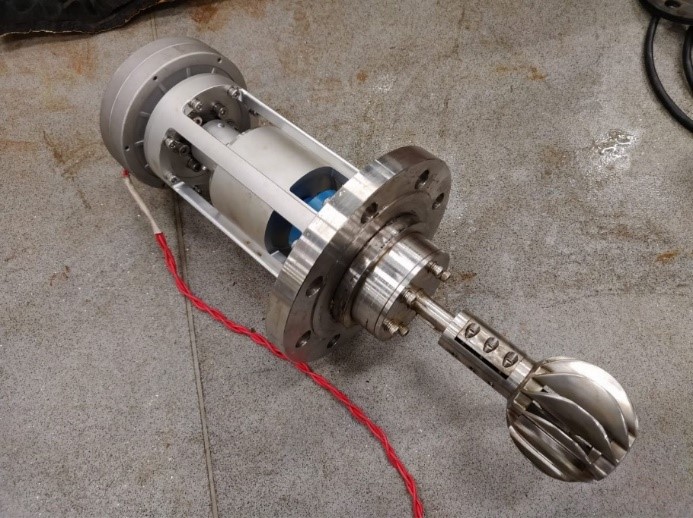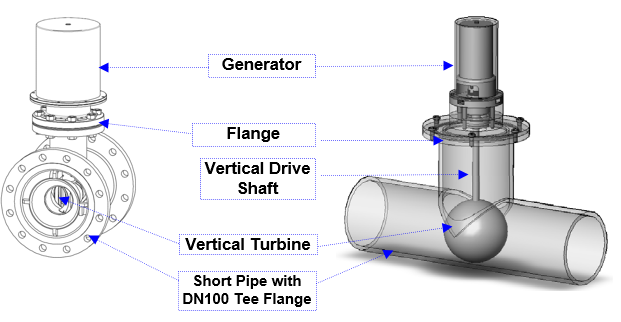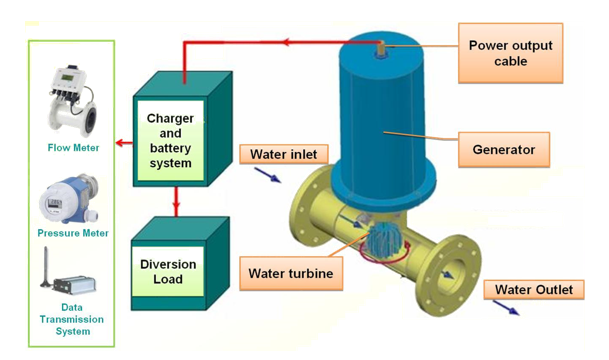Introduction
Online monitoring instruments and wireless data transmitters are important tools for the management of a modern water distribution network, and these new facilities need a reliable, convenient and cost-effective means of power supply.
WSD collaborated with the Hong Kong Polytechnic University (PolyU) on the development of an inline micro hydroelectric generating system for use in confined conditions in end of 2009, which is a renewable energy device that uses green energy tapped from surplus pressure in water mains, in order to cope with the Water Intelligent Network (WIN)’s requirements on real-time monitoring and control of the water distribution network.
The device is designed to generate electric power from water flow in pipes for operating the underground instruments, such as flowmeters installed at remote locations and under congested urban streets, where other sources of power supply are not readily available, with the merits of no needing regular replacement of disposable batteries and helps reduce carbon emission.
Merits of Application
All in all, the merits of using IHHDs for WIN projects are as follows:-
Operating Principle


The core part of the system is an inline hydroelectric generator. Its basic operating principle is to use a highly efficient inline turbine to transform the surplus pressure of water flowing in a water pipe and transform it into electric power for storage or direct consumption.
When water flows through the pipe, the turbine drives a micro generator to generate electricity of around 20W under an average water flow velocity of around 1.5 m/s.
System Design

The new generation of the IHHD works “as a system” to power the monitoring and transmission equipment for the smart water network.
It is composed of various components, namely, an integrated turbine-generator for harnessing surplus water power in the pipeline for converting it into zero-carbon electricity, a short pipe for swift installation to a pipeline, a charger and battery system for dealing with diurnal flow characteristics of the fresh water distribution network, and a diversion load for dissipating surplus electricity and preventing over-speeding of the integrated turbine-generator unit.
Way Forward
We are now seeking to incorporate the IHHDs in new development projects (New Development Areas (NDAs) and new housing developments) as a smart initiative.
In the meanwhile, we are developing with the 5th generation of IHHD to work in Lower Flow Conditions (LFC).